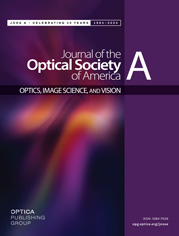
The Journal of the Optical Society of America A (JOSA A) publishes invitation-only tutorials that provide instructive materials not available in textbooks. These tutorials are freely available so that the new perspectives and valuable tools are available to all.
More Information
JOSAA Tutorials
39 results
